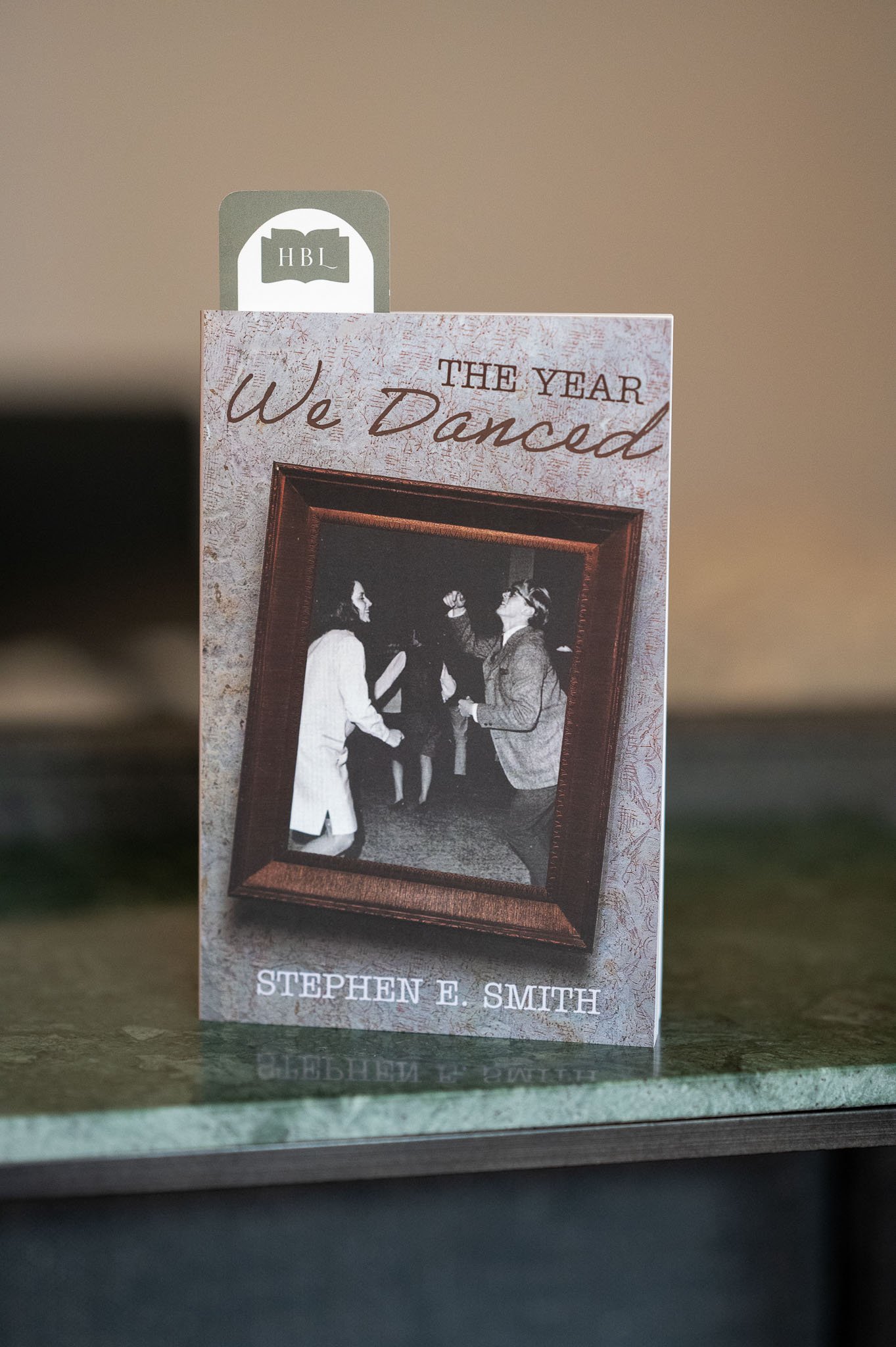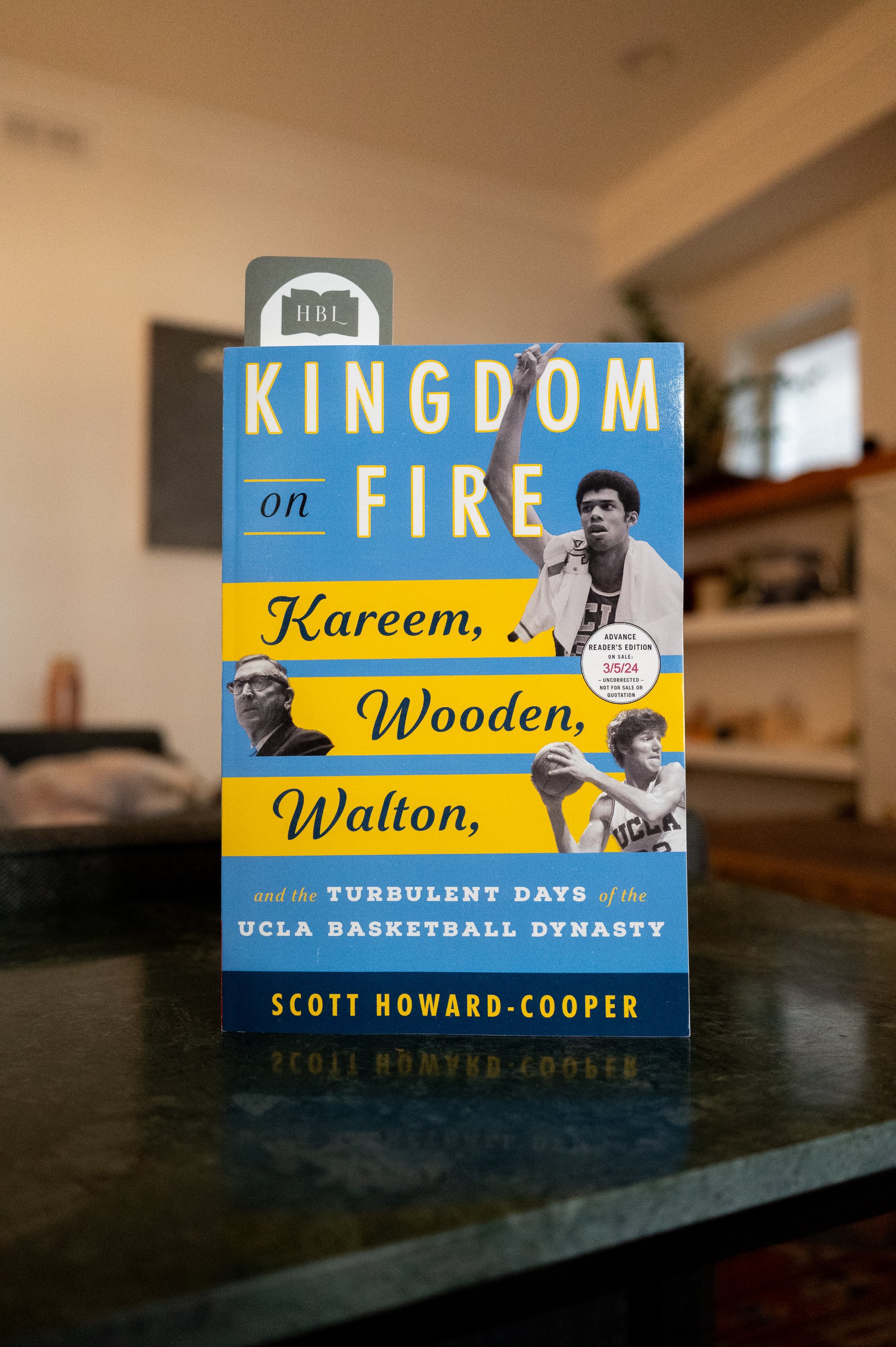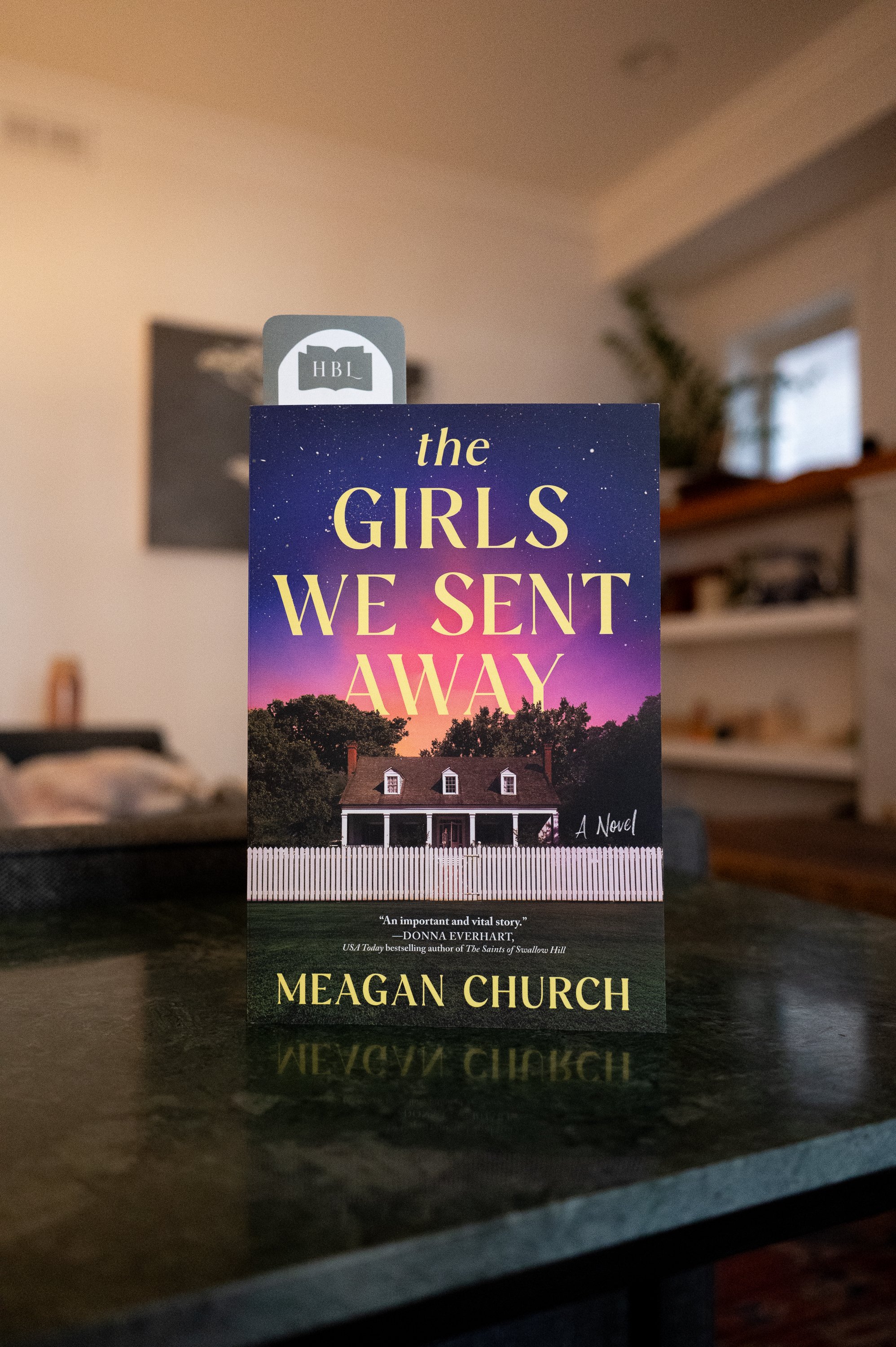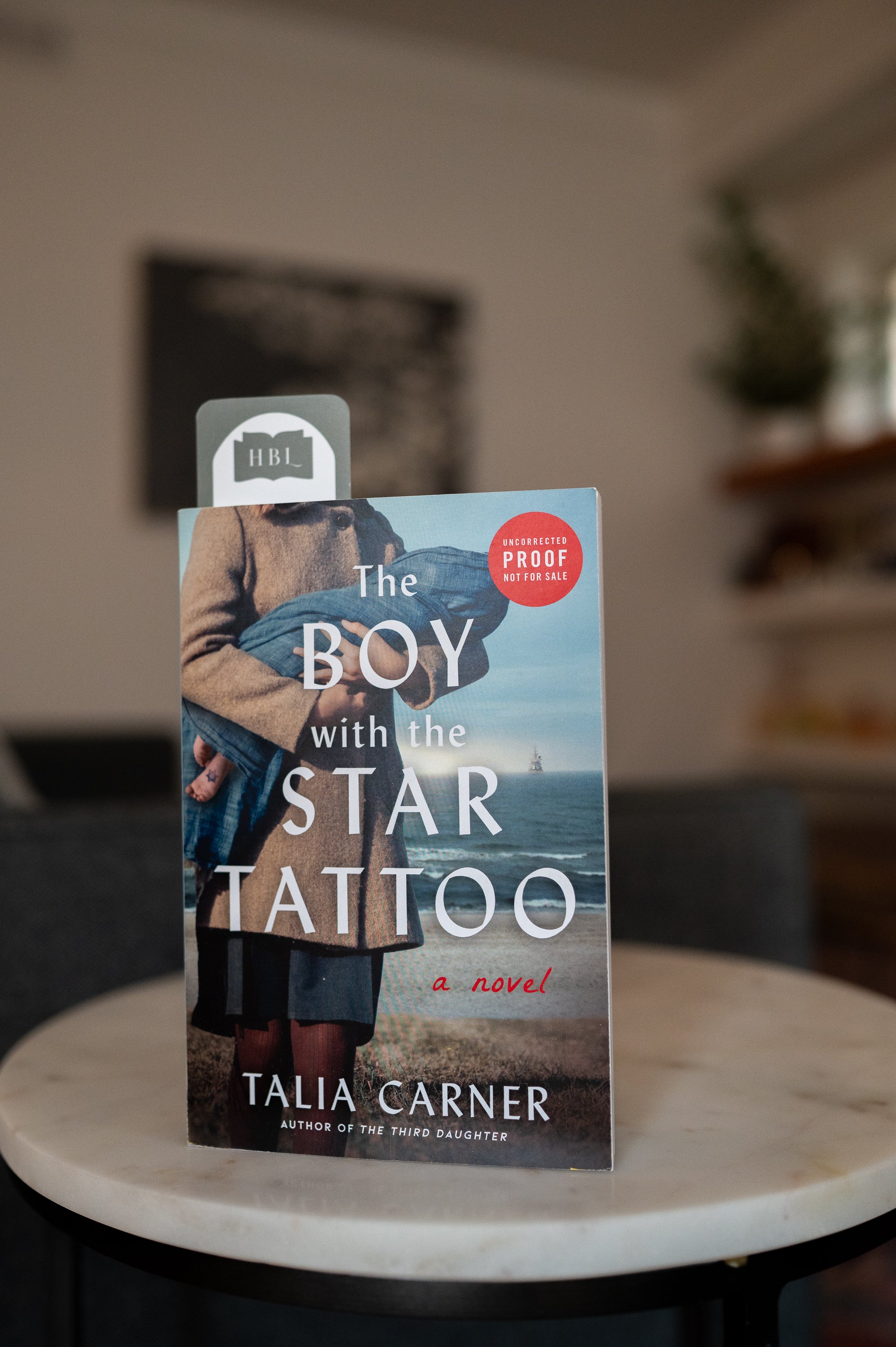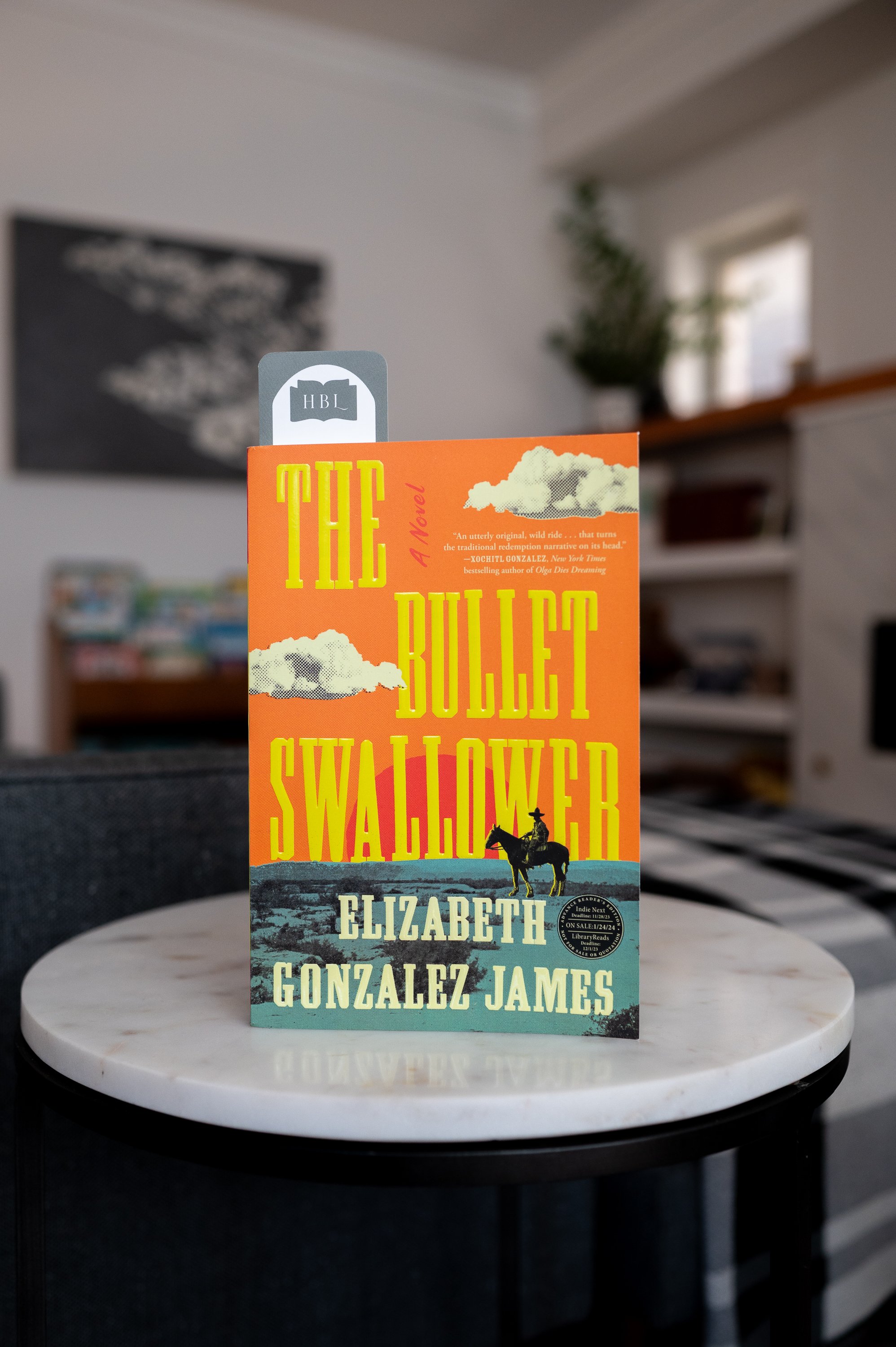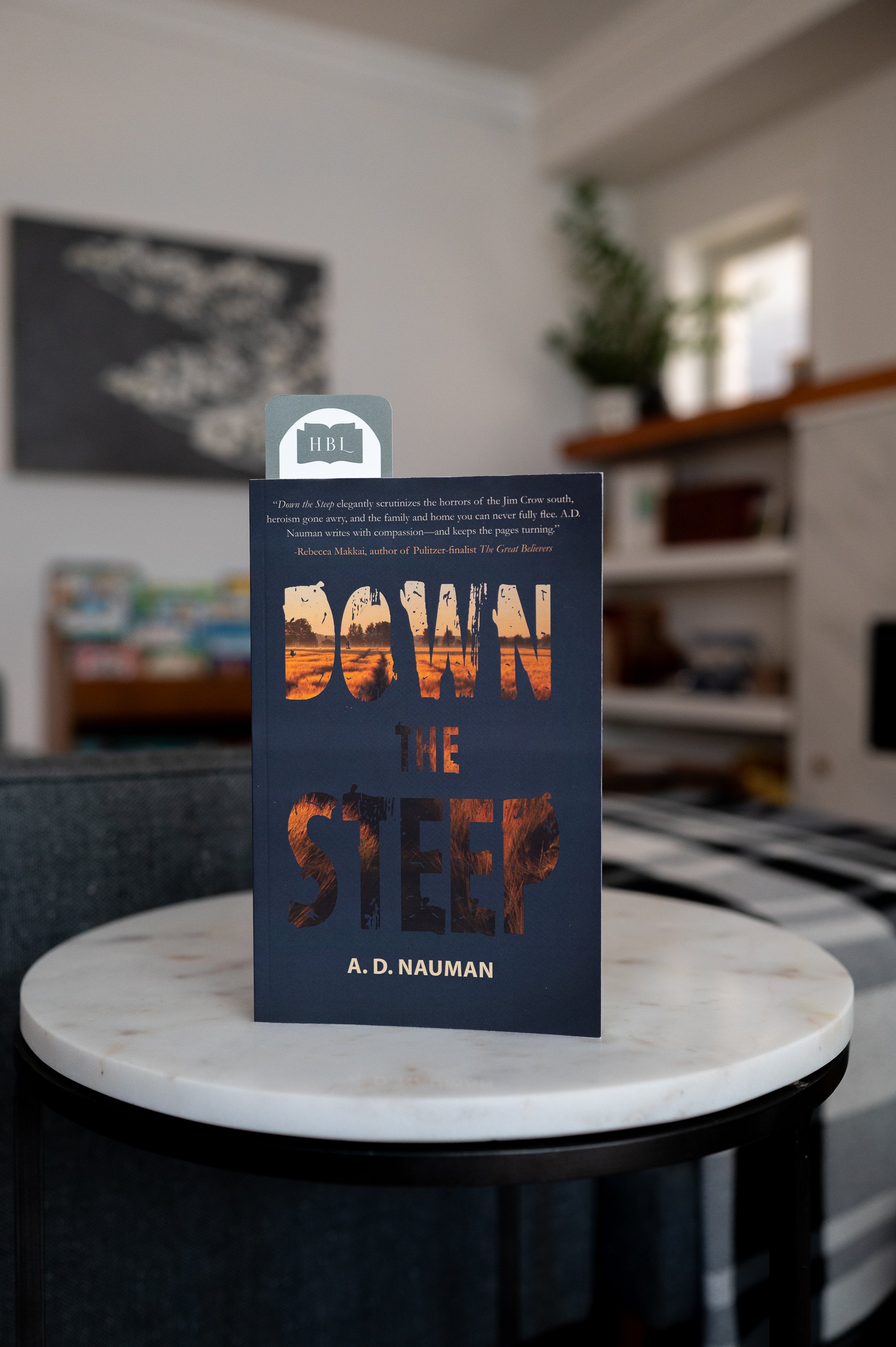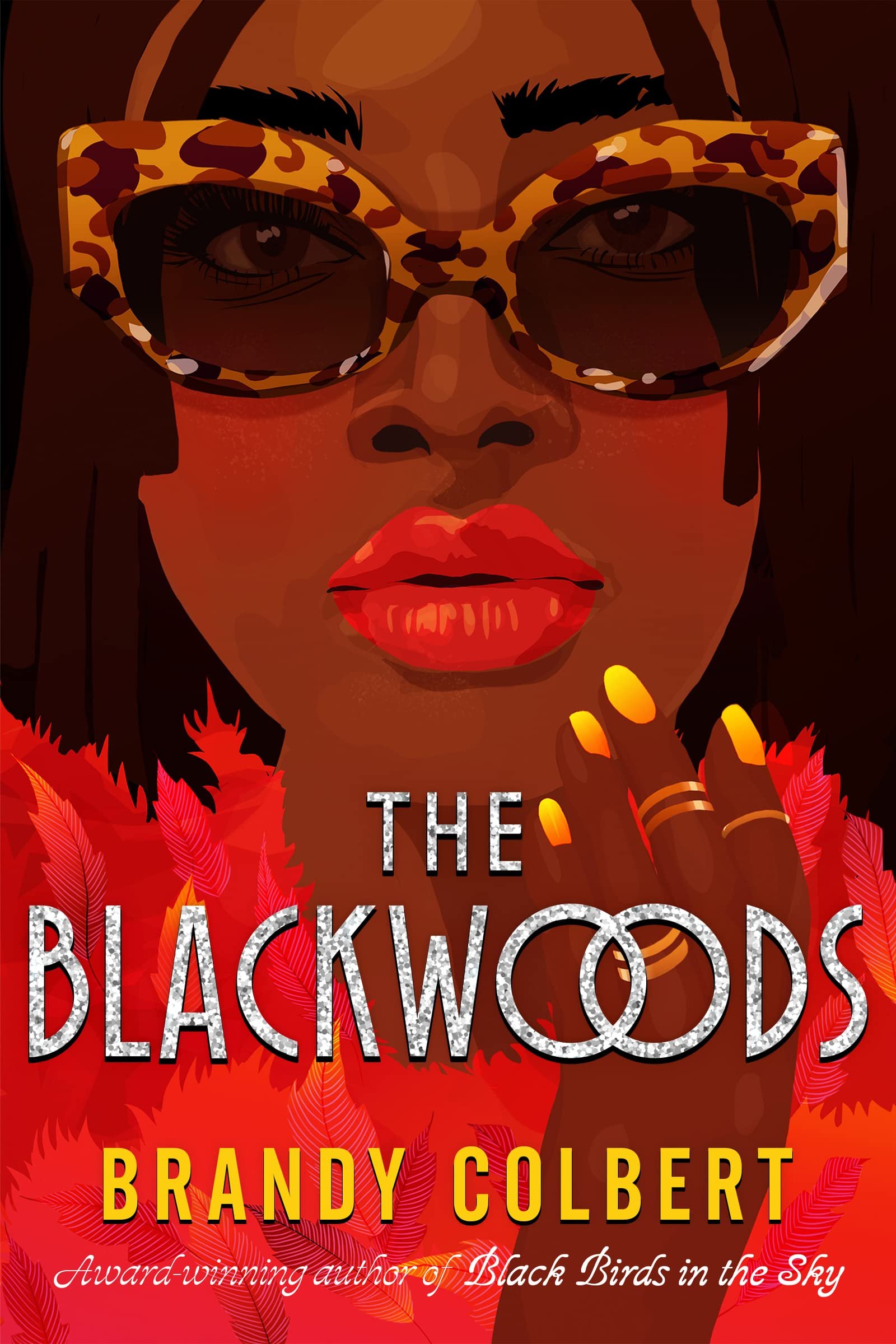Books Set in the 1960s
Books Set in the 1960s
I want to note that I do not get paid to do these posts, I just love authors and the book industry. However, they do take time and energy to create. If you want to donate a few dollars to my coffee fund, which keeps this blog going, you can do so here: https://venmo.com/AshleyHasty or here: http://paypal.me/hastybooklist.
1960s Nostalgia: A Decade of Change, Style, and Revolution
The 1960s was a vibrant, revolutionary decade that left an indelible mark on culture, fashion, and society. From the countercultural movements to the groundbreaking music and fashion, it was a time of exploration, transformation, and breaking free from the conventions of the past. Here’s a nostalgic look back at some of the most defining moments and trends of the ‘60s.
1. The Rise of Youth Culture
The ‘60s is often remembered as the decade when the youth came into their own. The post-war baby boomers were now teenagers and young adults, and they wanted to change the world. This youthful energy fueled the counterculture movement, from the rise of civil rights activism to the anti-war protests. Young people were rejecting traditional values, questioning authority, and embracing the freedom to think differently.
2. Fashion: From Mod to Hippie
The fashion of the 1960s is as diverse as the decade itself. Early on, the Mod look ruled the streets of London. Inspired by clean lines, geometric shapes, and bold colors, icons like Twiggy and The Beatles helped cement this style. Mini skirts, go-go boots, and shift dresses were in every fashionista’s wardrobe.
By the late ‘60s, fashion took a more relaxed, bohemian turn. The hippie movement brought with it flowing maxi dresses, bell-bottoms, tie-dye shirts, and fringe. It was all about peace, love, and individuality, with Woodstock being the ultimate showcase of this style.
3. Music: The British Invasion and Psychedelic Rock
Music in the 1960s was more than just entertainment—it was a form of rebellion and expression. The British Invasion, led by The Beatles, The Rolling Stones, and The Who, took over the world. Their sounds were fresh, their styles rebellious, and their influence enormous.
Later in the decade, music became more experimental. Psychedelic rock emerged, with bands like The Doors, Jefferson Airplane, and Pink Floyd pushing the boundaries of what music could be. The Woodstock Music Festival in 1969 symbolized the height of this movement, gathering hundreds of thousands of people in celebration of music, peace, and freedom.
4. Civil Rights and Social Movements
The 1960s was a time of significant social upheaval. The civil rights movement was in full swing, with leaders like Martin Luther King Jr., Malcolm X, and Rosa Parks fighting for racial equality. Major milestones, like the March on Washington in 1963 and the passing of the Civil Rights Act of 1964, marked the decade as a time of progress and struggle.
Feminism also gained momentum in the 1960s. Betty Friedan’s The Feminine Mystique sparked the second-wave feminist movement, challenging the traditional roles of women and fighting for equal rights in the workplace, politics, and home life.
5. Television: The New Frontier
Television became a central part of American life in the 1960s. Shows like The Andy Griffith Show, Bewitched, and I Dream of Jeannie entertained families while reflecting the changing times. For many, television also brought the decade’s most pivotal moments into their homes—the assassination of JFK, the civil rights marches, and, of course, the moon landing in 1969. Star Trek even transported audiences to a utopian future, becoming a cult classic for its forward-thinking depiction of space exploration and social issues.
6. The Space Race
The race to the moon was one of the most thrilling and defining aspects of the 1960s. America and the Soviet Union were locked in a fierce competition to prove their technological superiority. When Neil Armstrong took his first steps on the moon in 1969, it was a moment of unity and national pride, immortalized by his famous words, “That’s one small step for man, one giant leap for mankind.”
7. The Counterculture Revolution
Perhaps nothing defines the 1960s better than the rise of the counterculture. Hippies, flower power, and free love were the hallmarks of this movement. Young people across the country were rejecting materialism, the Vietnam War, and traditional social structures. Communes, psychedelic experiences, and protests became widespread as the younger generation sought to live more authentically and peacefully.
8. Pop Culture Icons: The Face of a Generation
The 1960s produced some of the most iconic cultural figures of all time. From music to movies to politics, these icons defined the decade’s spirit:
The Beatles: Their evolution from lovable mop-tops to psychedelic rockers mirrored the decade’s transformation.
Audrey Hepburn: Her roles in films like Breakfast at Tiffany’s made her a fashion and cultural icon.
Jackie Kennedy: As First Lady, Jackie O embodied the elegance, grace, and style of the ‘60s.
Muhammad Ali: The boxer’s charisma and political stance made him a voice of resistance and empowerment.
9. Cars: The Muscle Car Era
The 1960s were also the golden age of the muscle car. Cars like the Ford Mustang, Chevy Camaro, and Pontiac GTO roared down the highways, embodying the American love affair with automobiles. The decade also saw the rise of the Volkswagen Beetle, the symbol of counterculture, offering a quirky, economical alternative to the gas-guzzling muscle cars.
10. Legacy
The 1960s was a decade of immense change, setting the stage for the social, cultural, and political landscapes we know today. Whether it’s the fashion, music, or the values of freedom and self-expression, the influence of the ‘60s can still be felt in every corner of modern life.
From Mods to hippies, civil rights marches to moon landings, the 1960s was a time of innovation and rebellion, leaving a legacy of transformation and revolution.
Untethered by Angela Jackson-Brown
Author Interview with Angela Jackson-Brown
Sometimes family is found in the most unlikely of places . . .
In the small college town of Troy, Alabama, amidst the backdrop of 1967, Katia Daniels lives a life steeped in responsibility. At the Pike County Group Home for Negro Boys, she pours her heart into nurturing the young lives under her care, harboring a longing for children of her own. Katia's romantic entanglement with an older man brings comfort but also stirs questions about the path she's chosen.
The weight of her family's history bears down on her; a twin brother is missing in action in the heart of the Vietnam War. Having lost her father to cancer, Katia took up the mantle of caretaker, ensuring her mother and brothers were looked after. Her sense of duty extends to the boys at the group home, creating a web of obligations that stretches her emotional bandwidth thin.
Amidst a power struggle at work with the board, Katia finds solace in the pages of romance novels and the soothing melodies of Nina Simone. When Seth Taylor, a familiar face from her high school days, reenters Katia's life, he brings with him a breeze of nostalgia and a reminder of a time when her dreams felt less tethered. As their friendship rekindles, Katia grapples with the idea of making choices for herself, even as the realization that she can no longer have children weighs heavily on her.
This novel is a poignant tale of a woman torn between the demands of her heart and the responsibilities she's shouldered for so long. Set against the backdrop of a changing South, this novel delves into the complexities of love, family, and self-discovery in a time of transformation and upheaval.
The Pink Dress: A Memoir of a Reluctant Beauty Queen
Also featured in Books Set in the 1970s
Author Interview with Jane Little Botkin
For fans of Little Miss Sunshine and Secrets of Miss America, this memoir from a national award-winning author reveals the reality of being the first Guyrex Girl in the 1970s. Beauty pageant stories have never been this raw, this real.
Growing up in West Texas, Jane Little Botkin didn’t have designs on becoming a beauty queen. But not long after joining a pageant on a whim in college, she became the first protégé of El Paso’s Richard Guy and Rex Holt, known as the “Kings of Beauty”—just as the 1970’s counterculture movement began to take off.
A pink, rose-covered gown—a Guyrex creation—symbolizes the fairy tale life that young women in Jane’s time imagined beauty queens had. Its near destruction exposes reality: the author’s failed relationship with her mother, and her parents’ failed relationship with one another. Weaving these narrative threads together is the Wild West notion that anything is possible, especially do-overs.
The Pink Dress awakens nostalgia for the 1960s and 1970s, the era’s conflicts and growth pains. A common expectation that women went to college to get “MRS” degrees—to find a husband and become a stay-at-home wife and mother—often prevailed. How does one swim upstream against this notion among feminist voices that protest “If You Want Meat, Go to a Butcher!” at beauty pageants, two flamboyant showmen, and a developing awareness of self? Torn between women’s traditional roles and what women could be, Guyrex Girls evolved, as did the author.
The Fallen Fruit by Shawntelle Madison
Combining history and fantasy, a sweeping multi-generational epic in the vein of Kindred and The Time Traveler's Wife about a woman who travels through time to end a family curse that has plagued her ancestors for generations.
On a rainy day in May 1964, history professor Cecily Bridge-Davis begins to search for the sixty-five acres of land she inherited from her father’s family. The quest leads her to uncover a dark secret: In every generation, one offspring from each Bridge family unit vanishes—and is mysteriously whisked back in time. Rules have been established that must be followed to prevent dire consequences:
Never interfere with past events.
Always carry your free Negro papers.
Search for the survival family packs in the orchard and surrounding forest. The ribbon on the pack designates the decade the pack was made to orient you in time.
Do not speak to strangers unless absolutely necessary.
With only a family Bible and a map marked with the locations of mysterious containers to aid her, Cecily heads to the library, hoping to discover the truth of how this curse began, and how it might be ended. As she moves through time, she encounters a circle of ancestors, including Sabrina Humbles, a free Black woman who must find the courage to seize an opportunity—or lose her heart; Luke Bridge, who traverses battlefields, slavery, and time itself to reunite with his family; Rebecca Bridge, a mother tested by an ominous threat; and Amelia Bridge, a young woman burdened with survivor's guilt who will face the challenge of a lifetime—and change Cecily's life forever. It is a race through time and against the clock to find the answers that will free her family forever.
Shawntelle Madison’s historical fiction debut is an enthralling, page-turning family saga about the inevitability of fate, the invincibility of love, and the indelible bonds of family.
The Empress of Cooke County by Elizabeth Bass Parman
Author Interview with Elizabeth Bass Parman
Posey Jarvis knows she's the rightful Empress of Cooke County . . . she just needs to make everyone else realize it too.
Thirty-eight-year-old Posey Jarvis is the self-appointed "Empress" of rural Spark, in Cooke County, Tennessee. She spends her days following every word about her idol and look-alike Jackie Kennedy, avoiding her stalwart husband Vern, and struggling to control her newly defiant daughter Callie Jane--all while sneaking nips of gin. When Posey unexpectedly inherits a derelict mansion from her quirky old Aunt Milbrey, she finagles her way into hosting her high school's twentieth reunion there. She cares nothing about seeing her classmates, but she cares deeply about seeing the love of her life, a man who dumped her nineteen years ago. Possums are nesting in the parlor and the stench of cat urine permeates the sunroom, but she must be ready for the big day, even if she has to do the work herself.
Eighteen-year-old Callie Jane finds herself accidentally engaged and is panicking about her fast-approaching wedding. She's also had enough of her domineering mother. Even though she loves her father, the idea of working at his Emporium for the rest of her life just makes her . . . so sad. She longs to escape from her mother, her job, her upcoming wedding, and the creepy peeping Tom terrorizing the town. She dreams of leaving everything she's ever known in her rearview mirror and starting over in California, but when her life has been mapped out for her from birth, how can she break free?
Set in a gossipy small town during the turbulent 1960s, and full of Southern charm and unforgettable characters, The Empress of Cooke County is a novel about found family, what it means to be loved, and how being true to yourself can have life-altering consequences.
The Shadow of War by Jeff Shaara
From the bestselling author comes the story of rising conflict between the super-powers that gripped the world, a global war that almost happened: The Cuban Missile Crisis.
In 1961, the new president John F. Kennedy, inherited an ill-conceived, poorly executed invasion of Cuba that failed miserably and set in motion the events that put the U.S. and the Soviet Union on a collision course that nearly started a war that would have enveloped much of the world.
Extensively researched and vividly imagined, The Shadow of War brings to life the many threads that lead to the building crisis between the Soviet Union and the United States in 1962.
Told from a multitude of perspectives and voices, from the Russian engineer attempting the near impossible task of building the missile launch facilities in Cuba, to the U.S. Navy commanders who ships are sent to "quarantine" Cuba, to the Soviet Premier, Nikita Khrushchev, desperately trying to maintain a challenging balancing act between the conflicting demands of various powerful forces, to the brothers Kennedy (Bobby and JFK) who can't allow Russia to land nuclear missiles in Cuba, or to appear weak in confronting Khrushchev, but keenly understand how close they are dancing to the edge of war.
Shaara brings to life all the action and actors, famous and little known, that embodied a war that almost happened, the Cuban Missile Crisis.
You Should Be So Lucky by Cat Sebastian
An emotional, slow-burn, grumpy/sunshine, queer mid-century romance for fans of Evvie Drake Starts Over, about grief and found family, between the new star shortstop stuck in a batting slump and the reporter assigned to (reluctantly) cover his first season—set in the same universe as We Could Be So Good.
The 1960 baseball season is shaping up to be the worst year of Eddie O’Leary’s life. He can’t manage to hit the ball, his new teammates hate him, he’s living out of a suitcase, and he’s homesick. When the team’s owner orders him to give a bunch of interviews to some snobby reporter, he’s ready to call it quits. He can barely manage to behave himself for the length of a game, let alone an entire season. But he’s already on thin ice, so he has no choice but to agree.
Mark Bailey is not a sports reporter. He writes for the arts page, and these days he’s barely even managing to do that much. He’s had a rough year and just wants to be left alone in his too-empty apartment, mourning a partner he’d never been able to be public about. The last thing he needs is to spend a season writing about New York’s obnoxious new shortstop in a stunt to get the struggling newspaper more readers.
Isolated together within the crush of an anonymous city, these two lonely souls orbit each other as they slowly give in to the inevitable gravity of their attraction. But Mark has vowed that he’ll never be someone’s secret ever again, and Eddie can’t be out as a professional athlete. It’s just them against the world, and they’ll both have to decide if that’s enough.
The Year We Danced: A Memoir by Stephen E. Smith
Spurred on by the pandemic and the rising death toll, writer Stephen E. Smith decided it was appropriate to write about happier, less stressful times, so he turned to a box of forgotten files more than half a century old. Hoping to be comforted by the warmth of nostalgia, Stephen found that instead, these objects revealed a different picture from the one he’d remembered. So he began to reexamine the events that shaped his coming of age in the 1960s, and “The Year We Danced: A Memoir” was born.
With the number of Covid cases increasing and the death toll steadily rising, award-winning writer Stephen E. Smith decided it was appropriate—maybe even necessary—to write about happier, less stressful times. In a box of forgotten files, he rediscovered loose-leaf binders and keepsakes from his first year of college. It had been more than half a century but reading through his course notes, personal observations, and the clippings he’d torn from magazines and newspapers, he pieced together the events, good and bad, tender and tragic, that shaped his freshman year.
Much of what he writes is disarmingly funny, but recalling the Civil Rights Movement, the Vietnam War, and the complexities of finding himself a stranger in the South forced him to reassess a period of his life he’d long recalled as carefree. In this vivid and poignant mid-60s memoir, readers come to understand how friendship, a love of language and music, and the bittersweet remembrance of lost love can help sustain us through difficult times.
The Library of Borrowed Hearts by Lucy Gilmore
Also appeared in my My Most-Anticipated Romance Novels of 2024
Two young lovers. Sixty long years. One bookish mystery worth solving.
Librarian Chloe Sampson has been struggling: to take care of her three younger siblings, to find herself, to make ends meet. She's just about at the end of her rope when she stumbles across a rare edition of a book from the 1960s at the local flea market. Deciding it's a sign of her luck turning, she takes it home with her--only to be shocked when her cranky hermit of a neighbor swoops in and offers to buy it for an exorbitant price. Intrigued, Chloe takes a closer look at the book only to find notes scribbled in the margins between two young lovers back when the book was new...one of whom is almost definitely Jasper Holmes, the curmudgeon next door.
When she begins following the clues left behind, she discovers this isn't the only old book in town filled with romantic marginalia. This kickstarts a literary scavenger hunt that Chloe is determined to see through to the end. What happened to the two tragic lovers who corresponded in the margins of so many different library books? And what does it have to do with the old, sad man next door--who only now has begun to open his home and heart to Chloe and her siblings?
In a romantic tale that spans the decades, Chloe discovers that there's much more to her grouchy old neighbor than meets the eye. And in allowing herself to accept the unexpected friendship he offers, she learns that some love stories begin in the unlikeliest of places.
The Beautiful People by Michelle Gable
Author Interview with Michelle Gable
Set against the glamorous 1960s Jet Set, a novel about a failed west coast debutante whose new job as assistant to society photographer Slim Aarons takes her into the complicated inner circle of Palm Beach socialites, and into a beguiling friendship with the star at its center, heiress and rising fashion designer Lilly Pulitzer
Beautiful People. Beautiful Places. Escape into the glittering world of Lilly Pulitzer and the 1960s Jet Set in this stylish, charming novel...
It’s 1961, and for Margo Hightower, everything is about to change. True, her engagement is off, her family has fallen in scandal, and she's completely broke. But she’s just been hired as assistant to photographer Slim Aarons—famous for his vibrant pictures of high society, royalty, and Hollywood stars—and she knows this opportunity is her ticket to something better.
From the bright beaches of Acapulco to glitzy parties in New York, Margo is thrown headfirst into the glamorous Jet Set world she so covets, observing their ways from behind the camera as Slim’s sidekick. There’s Jackie Kennedy, Truman Capote's Swans, a host of Vanderbilts. Beautiful people in beautiful places.
But when they land in Palm Beach, a scene with few rules and many riches, the lines between work and play begin to blur. As Margo becomes swept up in the city’s social circle—and into a friendship with heiress and rising fashion designer Lilly Pulitzer—the golden life seems increasingly in reach. Until she finds herself entangled in a complicated web of loyalties and secrets that could bring it all crashing down...
Kingdom on Fire by Scott Howard-Cooper
In the tradition of Blood in the Garden and Three-Ring Circus comes a bold narrative history of the iconic UCLA Bruins championship teams led by legendary coach John Wooden—an incredible true story about the messy, never-easy pursuit of perfection set against the turmoil of American culture in the 1960s and 70s.
Few basketball dynasties have reigned supreme like the UCLA Bruins did over college basketball from 1965–1975 (seven consecutive titles, three perfect records, an eighty-eight-game winning streak that remains unmatched). At the center of this legendary franchise were the now-iconic players Kareem Abdul Jabbar and Bill Walton, naturally reserved personalities who became outspoken giants when it came to race and the Vietnam War. These generational talents were led by John Wooden, a conservative counterweight to his star players whose leadership skills would transcend the game after his retirement. But before the three of them became history, they would have to make it—together.
Los Angeles native and longtime sportswriter for the Los Angeles Times, Scott Howard Cooper draws on more than a hundred interviews and extensive access to many of the principal figures, including Wooden’s family to deliver a rich narrative that reveals the turmoil at the heart of this storied college basketball program. Making the eye-opening connections between UCLA and the Nixon administration, Ronald Reagan, Muhammad Ali, and others, Kingdom on Fire puts the UCLA basketball team’s political involvement and influence in full relief for the first time. The story of UCLA basketball is an incredible slice of American history that reveals what it truly takes to achieve and sustain greatness while standing up for what you believe in.
The Girls We Sent Away by Meagan Church
A searing book club read for fans of Ellen Marie Wiseman and The Girls with No Names set in the Baby Scoop Era of 1960s and the women of a certain condition swept up in a dark history.
It's the 1960s and Lorraine Delford has it all – an upstanding family, a perfect boyfriend, and a white picket fence home in North Carolina. Yet every time she looks through her father's telescope, she dreams of the stars. It's ambitious, but Lorraine has always been exceptional.
But when this darling girl-next-door gets pregnant, she's forced to learn firsthand the realities that keep women grounded.
To hide their daughter's secret shame, the Delfords send Lorraine to a maternity home for wayward girls. But this is no safe haven – it's a house with dark secrets and suffocating rules. And as Lorraine begins to piece together a new vision for her life, she must decide if she can fight against the powers that aim to take her child or submit to the rules of a society she once admired.
Powerful and affecting, The Girls We Sent Away is a timely novel that explores autonomy, belonging, and a quest for agency when the illusions of life-as-you-know-it fall away.
The Last Days of the Midnight Ramblers by Sarah Tomlinson
Also appeared in My Most-Anticipated Historical Fiction of 2024
Anke Berben is ready to tell all. A legendary model and style icon, she reveled in headline-grabbing romances with not one but three members of the hugely influential rock band the Midnight Ramblers. The band members were as famous for their backstage drama as for their music, and Anke is the only one who fully understands the tangled relationships, betrayals, and suspicions that have added to the Ramblers’ enduring appeal and mystique. That is most evident in the mystery around Anke’s role in the death of Mal, the band’s founder and Anke’s husband, in 1969.
When Mari Hawthorn accepts the job to work with Anke on her memoir, she is dead set on getting to the truth of Mal’s death. She has always been deft at navigating the fatal charms of celebrities, having grown up with a narcissistic, alcoholic father. As she ingratiates herself into the world of the band, she grows enchanted, against her better judgment, by these legendary rock stars. She knows she can’t get pulled in too deep, otherwise she’ll compromise her objectivity―and her integrity.
Filled with all of the glamour and attitude of rock and roll, The Last Days of the Midnight Ramblers is a bighearted page-turner that will appeal to fans of Daisy Jones & The Six and Almost Famous.
The Boy with the Star Tattoo by Talia Carner
From acclaimed author of The Third Daughter comes an epic historical novel of ingenuity and courage, of love and loss, spanning postwar France when Israeli agents roamed the countryside to rescue hidden Jewish orphans—to the 1969 daring escape of the Israeli boats of Cherbourg.
1942: As the Vichy government hunts for Jews across France, Claudette Pelletier, a young and talented seamstress and lover of romance novels, falls in love with a Jewish man who seeks shelter at the château where she works. Their whirlwind and desperate romance before he must flee leaves her pregnant and terrified.
When the Nazis invade the Free Zone shortly after the birth of her child, the disabled Claudette is forced to make a heartbreaking choice and escapes to Spain, leaving her baby in the care of his nursemaid. By the time Claudette is able to return years later, her son has disappeared. Unbeknown to his anguished mother, the boy has been rescued by a Youth Aliyah agent searching for Jewish orphans.
1968: When Israeli naval officer Daniel Yarden recruits Sharon Bloomenthal for a secret naval operation in Cherbourg, France, he can’t imagine that he is the target of the agenda of the twenty-year-old grieving the recent loss of her fiancé in a drowned submarine. Sharon suspects that Danny's past in Youth Aliyah may reflect that of her mysterious late mother and she sets out to track her boss’s extraordinary journey as an orphan in a quaint French village all the way to Israel.
As Danny focuses on the future of his people and on executing a daring, crucial operation under France’s radar, he is unaware that the obsessed Sharon follows the breadcrumbs of clues across the country to find her answers. But she is wholly unprepared for the dilemma she must face upon solving the puzzle.
The Bullet Swallower: A Novel by Elizabeth Gonzalez James
Author Interview with Elizabeth Gonzalez James
The Bullet Swallower by multi-Pushcart-nominated Elizabeth Gonzalez James is a literary magical realist Western in the vein of Gabriel García Márquez and Larry McMurtry—imagine Blood Meridian as written by Carmen Maria Machado. The story follows a Mexican bandido as he sets off for Texas to save his family, only to encounter a mysterious figure who has come, finally, to collect a cosmic debt generations in the making.
The novel is inspired by the true story of Elizabeth’s great-grandfather who was a bandido in the 1800s. He was chased down by the Texas Rangers, shot in the face, and left for dead, but he lived and was afterwards known as El Tragabalas, or, the Bullet Swallower. Elizabeth was also fascinated by the story of her cousin, Lalo “El Piporro” Gonzalez, who was a movie star in Mexico in the 1950s and 1960s, and who made a film loosely based on her great-grandfather’s story in 1964. The character of Jaime Sonoro is inspired by him.
Elizabeth was impacted by the divisive political environment and hateful rhetoric aimed at migrants. Coming from the Texas/Mexico border herself, she wanted to share a story about the border as she understood it—a complicated, fluid, and beautiful place. The book begs the question who pays for the sins of our ancestors, and whether it is possible to be better than our forebears.
“An utterly original, wild ride rendered by Elizabeth Gonzalez James’ masterful hand that turns the traditional redemption narrative on its head. In cracking open her own family legends, The Bullet Swallower brings to vibrant, three-dimensional life the people and history of the Mexican and Texas border. Full of heart and humor, the magic in this book is not what is invented, but that it makes you wonder what it is, in all our histories, we may have forgotten?”—Xochitl Gonzalez, New York Times bestselling author of Olga Dies Dreaming
In addition to her personal motivations for the novel, Elizabeth has a unique publishing story and background. An opera singer with an MBA, she first published a novel (titled Mona at Sea) with the Santa Fe Writer’s project, after being named a finalist in their annual contest. That publication was well received, but had a very limited print run, so in many ways this is her first major release. The dramatic rights for The Bullet Swallower were sold in a competitive bidding war shortly after S&S acquired the book. Her stories and essays have appeared in The Idaho Review, Southern Humanities Review, The Rumpus, StorySouth, PANK, and elsewhere, and have received numerous Pushcart Prize and Best of the Net nominations. She was Interviews Editor at The Rumpus, and a former contributor to Ploughshares Blog. Originally from South Texas, Elizabeth now lives with her family in Massachusetts.
With polished, vivid prose and visceral violence reflective of the arid, cut-throat setting and time period, The Bullet Swallower is an epic intergenerational family saga that scorches into your memory long after reading. If you’re a fan of Outlawed by Anna North, The Thousand Crimes of Ming Tsu by Tom Lin, or Inland by Téa Obreht, you’ll be spellbound by The Bullet Swallower.
The Many Mothers of Ivy Puddingstone by Randy Susan Meyers
Seven Children. Five Mothers. One idyllic commune. What could go wrong?
Annabel Cooper wants to save the world. Her story begins in 1964 with her journey to Freedom Summer in Mississippi, where the disappearance of her first love ignites a lifelong fight for justice. Years later, she, her husband, and four other couples form a Boston political collective where they live together with their children in a rambling Boston house. As the era's social upheaval intensifies, they move their children to a Vermont Eden, where they can remain safe from the world's threats; their parents continue their political work, taking turns traveling to Vermont to care for the children.
But not all danger comes from the outside.
Annabel's daughter, Ivy, yearns for normalcy, not the patchouli-soaked, natural-food-laden confines of Vermont. But mostly, she longs for Annabel's attention-until a cataclysmic event alters the course of all their lives and she learns the limits of her many mothers and fathers.
The Many Mothers of Ivy Puddingstone delves into the intricate and nuanced dance of familial love and communal ties through the lens of sociopolitical upheaval from the 1960s to the present day, examining which sacrifices are worth the price.
Down the Steep by A.D. Nauman
Willa McCoy is a strong-minded teenager who longs to follow in the footsteps of her important father. But the year is 1963, the place is small-town Virginia, and her father is a Klansman. Steeped in racism, Willa believes the Klan is daring and brave—like the father she idolizes. She wants only to rise in his esteem; he wants only to keep everyone in their place. Impatient for her to be more feminine, Willa’s parents send her to babysit for the new minister’s wife, Ruth Swanson, unaware the Swansons have moved from Minnesota to do their part in the budding Civil Rights movement. Soon Willa finds herself at Ruth’s kitchen table with Langston Jones, a smart young Black man. Langston and Willa despise each other, but they both love Ruth, so their paths continue to cross. One evening, Langston reveals a secret he’s discovered: Willa’s father is having an affair. Devastated, the once-loyal daughter now plots to destroy her father’s reputation, unwittingly setting into motion a series of events that could lead to her family’s demise.
Homeward: A Novel by Angela Jackson-Brown
Author Interview with Angela Jackson-Brown
The country is changing, and her own world is being turned upside down. Nothing—and no one—will ever be the same.
Georgia, 1962. Rose Perkins Bourdon returns home to Parsons, GA, without her husband and pregnant with another man’s baby. After tragedy strikes her husband in the war overseas, a numb Rose is left with pieces of who she used to be and is forced to figure out what she is going to do with the rest of her life. Her sister introduces her to members of the Student Nonviolent Coordinating Committee—young people are taking risks and fighting battles Rose has only seen on television. Feeling emotions for the first time in what feels like forever, the excited and frightened Rose finds herself becoming increasingly involved in the resistance efforts. And of course, there is also the young man, Isaac Weinberg, whose passion for activism stirs something in her she didn’t think she would ever feel again.
Homeward follows Rose’s path toward self-discovery and growth as she becomes involved in the Civil Rights Movement, finally becoming the woman she has always dreamed of being.
The Blackwoods by Brandy Colbert
The Blackwoods. Everyone knows their name.
Blossom Blackwood burst onto the silver screen in 1962, and in the decades that followed, she would become one of the most celebrated actors of our time—and the matriarch of the most famous Black family in Hollywood. To her great-granddaughters, Hollis and Ardith, she has always just been Bebe. And when she passes away, it changes everything.
Hollis Blackwood was never interested in fame. Still, she’s surrounded by it, whether at home with her family or at the prestigious Dupree Academy among Los Angeles’ elite. When private photos of Hollis are leaked in the wake of Blossom’s death, she is thrust into the spotlight she’s long avoided—and finds that trust may be a luxury even she can’t afford.
Ardith Blackwood has always lived in the public eye. A television star since childhood, she was perhaps closer with Blossom than anyone—especially after Ardith’s mother died in a drug overdose. Ever since, she has worked to be everything her family, her church, and the public want her to be. But as a family secret comes to light and the pressures from all sides begin to mount, she wonders what is left beneath the face she shows the world.
Weaving together the narratives of Hollis, Ardith, and Blossom, award-winning author Brandy Colbert tells an unforgettable story set in an America where everything is personal, and nothing is private.
California Golden by Melanie Benjamin
Author Interview with Melanie Benjamin
Two sisters navigate the turbulent, euphoric early days of California surf culture in this dazzling saga of ambition, sacrifice, and longing for a family they never had, from the New York Times bestselling author of The Children's Blizzard
Southern California, 1960s: endless sunny days surfing in Malibu, followed by glittering neon nights at Whisky A-Go-Go. In an era when women are expected to be housewives, Carol Donnelly is breaking the mold as a legendary female surfer struggling to compete in a male-dominated sport—and her daughters, Mindy and Ginger, bear the weight of her unconventional lifestyle.
The Donnelly sisters grow up enduring their mother’s absence—physically, when she’s at the beach, and emotionally, the rare times she’s at home. To escape questions about Carol’s whereabouts—and chase their mom’s elusive affection—they cut school to spend their days in the surf. From her first time on a board, Mindy shows a natural talent, but Ginger, two years younger, feels out of place in the water.
As they grow up and their lives diverge, Mindy and Ginger’s relationship ebbs and flows. Mindy finds herself swept up in celebrity, complete with beachside love affairs, parties at the Playboy Club, and USO tours to Vietnam. Meanwhile, Ginger—desperate for a community of her own—is tugged into the vibrant counterculture of drugs and cults. Through it all, their sense of duty to each other survives, as the girls are forever connected by the emotional damage they carry from their unorthodox childhood.
A gripping, emotional story set at a time when mothers were expected to be Donna Reed, not Gidget, California Golden is an unforgettable novel about three women living in a society that was shifting as tempestuously as the breaking waves.
The Princess by Wendy Holden
Britain, 1961: A beautiful blonde baby is born to Viscount Althorp, heir to the Spencer earldom. But Diana grows up amid the fallout of her parents’ messy divorce. She struggles at school. Her refuge throughout is romantic novels. She dreams of falling in love and being rescued by a handsome prince.
In royal circles, there is concern about the Prince of Wales. Charles is nearing thirty and the right girl needs to be found, fast. She must be young, aristocratic and completely free of past liaisons. Pure and innocent. Eighteen-year-old Diana Spencer is just about the only candidate. Her yearning to be loved dovetails with royal desperation for a bride. But the route to the altar is perilous. There are hidden dangers and ruthless schemers. Diana's dream of love will change a nation.
A Boob's Life: How America's Obsession Shaped Me... and You
Author Leslie Lehr wants to talk about boobs. She’s gone from size AA to DDDD and everything between, from puberty to motherhood, enhancement to cancer, and beyond. And she’s not alone - these are classic life stages for women today.
At turns funny and heartbreaking, A Boob’s Life explores both the joys and hazards inherent to living in a woman’s body. Lehr deftly blends her personal narrative with national history, starting in the 1960s with the women’s liberation movement and moving to the current feminist dialogue and what it means to be a woman. Her insightful and clever writing analyzes how America’s obsession with the female form has affected her own life’s journey and the psyche of all women today.
From her prize-winning fiction to her viral New York Times Modern Love essay, exploring the challenges facing contemporary women has been Lehr’s life-long passion. A Boob’s Life, her first project since breast cancer treatment, continues this mission, taking readers on a wildly informative, deeply personal, and utterly relatable journey. No matter your gender, you’ll never view this sexy and sacred body part the same way again.
Atomic Family by Ciera Horton McElroy
A South Carolina family endures one life-shattering day in 1961 in a town that lies in the shadow of a nuclear bomb plant.
It’s November 1, 1961, in a small town in South Carolina, and nuclear war is coming. Ten-year-old Wilson Porter believes this with every fiber of his being. He prowls his neighborhood for Communists and studies fallout pamphlets and the habits of his father, a scientist at the nuclear plant in town.
Meanwhile, his mother Nellie covertly joins an anti-nuclear movement led by angry housewives—and his father, Dean, must decide what to do with the damning secrets he’s uncovered at the nuclear plant. When tragedy strikes, the Porter family must learn to confront their fears—of the world and of each other.
An Impossible Return by Caroline Laurent, Translated by Jeffrey Zuckerman
Winner of the Prix Maison de la Presse
An epic love story set against a backdrop of injustice, devastating secrets, and the painful price of independence.
It’s 1967 in the Chagos archipelago―a group of atolls in the Indian Ocean―and life is peaceful and easy for hardworking Marie. Her fierce independence and love for her home are quickly apparent to Gabriel, the handsome and sophisticated Mauritian secretary to the archipelago’s administrator; it’s love at first sight. As these two lovers from neighboring islands welcome a new son, Joséphin, a bright future seems possible. But Gabriel is hiding a terrible secret. The Mauritian government is negotiating independence from Britain, and this deal with the devil will mean evacuating the Chagos, without warning or mercy―a betrayal that will put their love to the test.
Inspired by a shocking travesty of justice, the repercussions of which still reverberate more than fifty years later, bestselling Franco-Mauritian author Caroline Laurent paints a shimmering portrait of island life, a sensual paradise lost, and a gorgeous star-crossed love against all odds.
Promenade of Desire by Isidra Mencos
María Isidra is a proper Catholic girl raised in 1960s Spain by a strong matriarch during a repressive dictatorship. Early sexual trauma and a hefty dose of fear keep her in line for much of her childhood, but also lead her to live a double life. In her home, there is no discussing the needs of her growing body. In the street, kissing in public is forbidden.
Upon the dictator’s death in 1975, Spain bursts wide open, giving way to democracy and a cultural revolution. Barcelona’s vibrant downtown and its new freedoms seduce María Isidra. She dives into a world of activism, communal living, literature, counterculture, open sexuality, and alcohol.
And yet she knows something is missing. Longing to reconnect with her body—from which she has felt estranged since childhood—she finds a surprising home in a rundown salsa club, where the lush rhythm sparks a deep wave of healing. Transformed, she sets off on a series of sexual and romantic misadventures, in search for what she has always found painfully elusive: true intimacy.
Departure Stories: Betty Crocker Made Matzoh Balls (and Other Lies) by Elisa Bernick
"We weren't religious per se. The most frequent mention of God in our house was my mother yelling 'Goddammit!'"
Elisa Bernick grew up "different" (i.e., Jewish) in the white, Christian suburb of New Hope, Minnesota during the 1960s and early 1970s. At the center of her world was her mother, Arlene, who was a foul-mouthed, red-headed, suburban Samson who ultimately shook the walls of their family until it collapsed. Poignant and provocative, Departure Stories peers through the broader lens of Minnesota's recent history to reveal an intergenerational journey through trauma that unraveled the Bernick family and many others.
Deftly interweaving reporting, archival material, memoir, jokes, scrapbook fragments, personal commentary, and one very special Waikiki Meatballs recipe, Bernick explores how the invisible baggage of place and memory, Minnesota's uniquely antisemitic history, and the cultural shifts of feminism and changing marital expectations contributed to her family's eventual implosion.
Departure Stories: Betty Crocker Made Matzoh Balls (and other lies) is a personal exploration of erasure, immigrants, and exiles that examines the ways departures—from places, families and memory—have far-reaching effects.
Sunday Afternoons and Other Times Remembered by Ben Ewell
Also featured in Books Set in the 1990s
On the afternoon of Easter Sunday, 1992, Ben Ewell’s brother, sister-in-law, and niece were all murdered. While trying to make sense of this staggering tragedy, Ben can’t help but think back through his life: the hard work and the many peaceful Sundays afternoons growing up on his family farm in Ohio in a house without a bathroom or running water; his high school antics in the 1950s; his time in Haight-Ashbury while attending law school in 1960s San Francisco; and the highs and lows, both personal and professional, of life after school. Threaded throughout these reminiscences, Ben reveals the details of the investigation of his family members’ murders—and the arrest and trial of the parties involved.
In this decades-long saga, there is marriage and divorce, love and loss, family and friendship; there are political campaigns and business ventures, some failed and some fruitful. Ultimately, this is a story of perseverance in the face of tragedy, of creating opportunities out of problems, and of appreciating the gift of life and the world around us—with some humor along the way.
What We Give, What We Take by Randi Triant
In 1967, Fay Stonewell, a water tank escape artist in Florida, leaves for Vietnam to join the Amazing Humans—a jerry-rigged carnival there to entertain the troops—abandoning her disabled teenage son, Dickie, to the care of an abusive boyfriend. Months after Fay’s departure, Dickie’s troubled home life ends in a surprising act of violence that forces him to run away. He soon lands in Manhattan, where he’s taken in by eccentric artist Laurence Jones. Fay, meanwhile, is also facing dangerous threats. From the night her plane jolts onto a darkened Saigon runway, she is forced to confront every bad decision she’s ever made as she struggles to return to her son. But the Humans owner is hell-bent on keeping her in Vietnam, performing only for war-injured children at a hospital, daily reminders of the son she’s left behind. Decades later, Dickie is forty, living in a Massachusetts coastal town with a man who’s dying of AIDS, and doing everything he can to escape his past. But although Spin may be giving Dickie what he’s always wanted—a home without wheels—it seems that the farther Dickie runs, the tighter the past clings to him.
Ultimately, What We Give, What We Take is a deeply moving story of second chances and rising above family circumstances, however dysfunctional they may be.
These Walls Between Us: A Memoir of Friendship Across Race and Class by Wendy Sanford
From a founding author of Our Bodies, Ourselves, Sanford tells a story, at once profoundly intimate and powerfully political, of her sixty-year friendship with Mary Norman, a Black woman whom she met when both were in their teens. The daughter of an upper-middle-class suburban family in Princeton, New Jersey, Sanford comes of age within the cultural revolutions of the 1960s, 70s and 80s. She embraces feminism, queer identity, and Quaker faith. Informed and fueled by the writings of women of color, she begins to reckon with the impact of her training in “the habits of dominance” and her white skin privilege, as she and Ms. Norman seek to become friends.
Grace by Nancy Allen
Author Interview with Nancy Allen
In this gripping and poignant tale, Catherine Finley leaves her dream job and the heartbreak of a failed relationship to take a new position closer to her ailing father, Douglas. As the undergraduate dean at Franklin College, she quickly discovers the history of her boss's sexual abuse. When she becomes his latest victim, she finds herself in conflict with the college's female president who will do anything to protect its secrets.
Catherine seeks refuge in visits to her father's shore home, but powerful memories unsettle her. A web of memories reveals Douglas's meaningful romance in the 1960s with Grace, a pioneer in the Civil Rights Movement, and his disappointment that social justice promised during that turbulent time was never fully realized. Catherine's professional and personal worlds collide as she discovers the College's secrets are woven into her father's story.
Nancy Allen's Grace is a stirring investigation of sexual politics and women's tenuous relationship with power. The novel's lyric prose conveys the power of memory to shape and redefine struggles with faith, self-doubt, and love lost.
Kids and Cocktails Don't Mix by Heather Haldeman
Author Heather Haldeman’s upcoming memoir Kids and Cocktails Don’t Mix (Apprentice House Press) explores machinations of gender and power dynamics in the 1960s and ‘70s as Heather comes of age and must decide how she wants her own life to look. Granddaughter of the Governor of California, Heather grew up in an exclusive gated community in Los Angeles with celebrities and political figures as neighbors, pool parties and cocktails flowing, children seen and not heard, with moments straight out of “Mad Men.”
Yet, nothing in Heather’s young life is as it appears. Her once opulent lifestyle is turned upside down when Heather’s father abandons the family to chase a wealthy woman. Cars are repossessed and the fashionable house they live in crumbles to pieces. Their lives uprooted, Heather, together with her glamorous mother Marilyn, and sister April, must find the grit to keep going forward.
1960s Fashion Overview: Bold, Revolutionary, and Iconic
The fashion of the 1960s was all about breaking the rules and expressing individuality. It was a decade of experimentation, where youth-driven style movements emerged, rejecting the more conservative fashion of previous decades. Here’s a look at the defining fashion trends of the ‘60s.
1. Mod Fashion: The Early 1960s
The Mod look dominated the early part of the decade, especially in London, where designers like Mary Quant and brands such as Biba set the trend. Influenced by the modern art movement, Mod fashion embraced sharp lines, bold patterns, and geometric shapes.
Key Pieces: Mini skirts (popularized by Mary Quant), shift dresses, and tailored suits.
Accessories: Knee-high boots, go-go boots, berets, and large statement jewelry.
Influences: Art movements like pop art and Op art, with its graphic prints and patterns, heavily influenced the Mod look. Twiggy, the iconic model, became the face of this style with her pixie haircut and androgynous look.
2. The Mini Skirt Revolution
Perhaps the most iconic fashion invention of the 1960s was the mini skirt. The mini represented liberation and a youthful spirit. It became a symbol of women’s newfound freedom and rebellion against traditional expectations. Along with the mini skirt, women began experimenting with shorter, less restrictive dresses, often styled with bold prints and vibrant colors.
3. Space-Age Fashion
In the mid-1960s, space exploration began to capture the world’s imagination, and fashion followed suit. Designers like André Courrèges and Pierre Cardin introduced futuristic elements to their collections. This trend, dubbed “space-age fashion,” was characterized by metallics, plastics, and angular shapes.
Key Features: Silver fabrics, PVC materials, and sleek, minimalist designs. The fashion mirrored the excitement surrounding the space race, with a focus on innovation and modernity.
4. Hippie and Bohemian Fashion: The Late 1960s
As the decade progressed, the fashion world shifted from the structured looks of Mod to the relaxed, free-spirited vibes of hippie and bohemian fashion. The rise of the counterculture, with its anti-establishment ethos, gave birth to a more laid-back, natural style.
Key Pieces: Maxi dresses, bell-bottom jeans, fringed jackets, tie-dye shirts, and peasant blouses.
Accessories: Headbands, oversized sunglasses, flower crowns, and beads were common.
Influences: The Woodstock festival in 1969 epitomized this fashion movement, where individual expression was key, and handmade, vintage-inspired garments became a staple.
5. Patterns and Prints
Bold, psychedelic patterns and prints defined 1960s fashion. Geometric shapes, abstract florals, paisleys, and pop-art designs were everywhere—from clothing to accessories. Vibrant colors like bright oranges, yellows, and pinks made outfits stand out, emphasizing the playful, optimistic mood of the time.
6. Unisex Fashion
The 1960s saw the rise of unisex fashion, where traditional gender lines in clothing were blurred. Women started wearing pants more frequently, and men embraced more flamboyant styles with bright colors, velvet jackets, and ruffled shirts. The androgynous look became fashionable, particularly within the Mod and rock ‘n’ roll subcultures.
7. Iconic Fashion Designers
Mary Quant: Credited with popularizing the mini skirt, she was a key figure in the Mod fashion movement.
Pierre Cardin: Known for his futuristic designs, including the bubble dress, he embodied the space-age fashion trend.
André Courrèges: Another space-age fashion innovator, famous for introducing modern, geometric shapes to womenswear.
Yves Saint Laurent: His Mondrian dress, inspired by abstract art, became one of the most iconic pieces of 1960s fashion.
8. Cultural Icons of 1960s Fashion
Twiggy: The British model became the face of the Mod fashion movement with her slim frame, doe eyes, and boyish haircut.
Jackie Kennedy: As First Lady, her sophisticated, elegant style—including pillbox hats, tailored suits, and chic accessories—was widely emulated.
The Beatles: Their early Mod look, with slim suits and Chelsea boots, influenced men’s fashion, and their later transition to more bohemian styles reflected the fashion shift of the late ‘60s.
9. Fashion Legacy of the 1960s
The fashion of the 1960s broke all the rules. It democratized style by making it accessible and fun, moving away from the exclusive, haute couture dominance of previous decades. From the structured elegance of Mod fashion to the free-spirited ethos of the hippie movement, the ‘60s set the stage for the individualistic, bold fashion statements we see in modern-day style.
In summary, the 1960s were a time of liberation, experimentation, and rebellion in fashion. It’s no wonder this era continues to inspire designers, stylists, and fashion lovers today.









